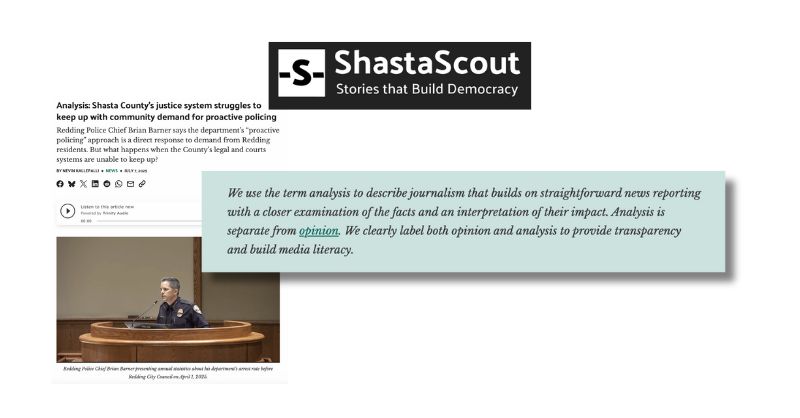
This weekly Trust Tips newsletter shares quick, actionable tips for how journalists can earn and sustain trust. Subscribe to get it in your inbox at trustingnews.org/newsletter.
Trust Tips 245: How to build trust in your coverage of conflict and war
Hi there. Lynn here.
Note: Our goal with advice like today’s is not to tell you what specific stories to publish or words to use. While each of us at Trusting News has opinions on that, we see our role as helping journalists make decisions based on their own values and their audience’s needs and then helping journalists be consistent, thoughtful and transparent about those decisions.
As conflicts and wars continue to lead newscasts and conversations, the responsibility of providing accurate, responsible and ethical information has never been more important. For many of us and our communities, the impact felt, while real, is very different from what people living in the midst of the war zones are feeling, thinking and experiencing.
As I consume news coverage about the war in Ukraine or the attacks in Israel and Palestine, I see news organizations providing so much information. You can find constant updates on the latest attacks and deaths. There are stories of survival and escape, and stories about politics and strategy. There are plenty of opinions and analysis. There are also stories about how to help, along with fact-checks and stories focused on the historical context of the situations. All of this coverage serves a purpose and, I think, in most cases it’s necessary and can be helpful to our communities.
However, our communities and the people we serve are unique. Each of us has a specific audience with specific needs. If we want to serve them well, we need to provide them with what they need to understand what is happening, navigate all of the information out there and provide opportunities for learning and constructive conversations. Here are some suggestions with that in mind.
Engage with the community
If we want to better serve our community, we have to know what they want and need. One way to do this is by asking them what would be helpful and what questions they have. We can then use what we hear and to help us make decisions about the direction of our coverage, what we will focus on and what we will include from outside sources.
When you’ve made up your mind about what you want your coverage to look like, get on the record about it. You can do this by writing a story about how you plan on covering this conflict or explaining what your community can expect from your coverage of the war.
Outlier Media did this in a post explaining their coverage will be focused on what questions and concerns people in Detroit have. In their explanation, they also share how they want to be sure to get the information correct, will think carefully about the language they use, and provide some specifics on some of the sourcing that we use.
 |
Explain your use of wire content and your language choices
We regularly hear from local newsrooms frustrated and overwhelmed by complaints related to the wire coverage they publish. This isn’t necessarily surprising, right? Wire content often covers challenging and politically divisive topics. With much of our reporting on conflict and war sourced from wire services or national desks, we need to be aware of these criticisms and take steps to build trust and transparency with our audience about our use of it.
One way to do this is to consider providing additional context within stories to help our community. While we may not have control over the primary content of wire stories, adding context through additional links or background stories helps our audience comprehend the larger picture.
You can also diversify and supplement the wire coverage by publishing your own content that meets the needs of your community. This could be answering questions from them, sharing local perspectives and talking to local experts. By showcasing multifaceted narratives, we counter the misconception of one-sided reporting.
Also, explain why you are using wire coverage. Most likely it’s because you don’t have reporters on the ground in these areas. Explain that. This helps build credibility and transparency, while potentially eliminating confusion or lack of knowledge about where the content comes from and how much control you have over it.
With any news content, headlines often shape initial perceptions. With wire coverage, sometimes headlines are the most problematic part of the story. Even when a story works to be even-handed, that approach can be undermined by a headline that prioritizes simplicity or catchiness over accuracy and straightforwardness. If possible, check headlines to make sure they reflect a fair, balanced perspective.
In recent editions of the Revisions newsletter from Resolve Philly (here and here), Aubrey Nagle spends time comparing headlines and discussing how the different words affect people’s perceptions. The newsletter also provides outside resources to help users better understand the conflict.
For more tips on explaining your use of wire coverage, read this post on our Medium publication and explore this Trust Kit on how to explain your coverage.
Provide resources
Dedicate efforts to debunking misinformation and disinformation. Offer fact-checks and clarifications when necessary, reinforcing your commitment to accurate reporting. Empower the public to critically analyze news sources and identify reliable information.
Also, consider providing or linking to outside or internal resources or guides that aid readers in understanding complex information about the topics, perspectives, history, etc.
Foster dialogue
Create platforms or forums where your audience can engage with each other constructively. You’re covering topics people have a lot of strong feelings about. Some of these feelings are based on personal experiences or experiences of those close to them. Some of these feelings are based on information they are consuming about the topic (some of which could be incorrect or meant to mislead).
However, feelings and opinions have been developed, and it can be helpful to hear from others, connect with others and discuss what’s happening. For a lot of people, the only way these discussions are happening is through social media channels or social feeds, and possibly in person. We know the discussions on social media can often be filled with hate speech, misinformation and not constructive.
What if journalists provided an alternative? How can we work with community groups, education centers, and faith communities, and provide opportunities to encourage respectful discussions and learning among community members? I think it’s possible. Challenging, but possible.
Trust and respect your staff
The strong feelings your community has are likely being felt by members of your team as well. As with any tough coverage, you can earn the trust of your colleagues by honoring their experiences and values and giving them room to navigate how those factors influence their coverage.
In our Dimensions of Difference work (a collaboration with Spaceship Media), we provide resources for newsrooms to acknowledge, learn from and lean on each other’s differences. Rather than setting aside those differences, we can make room for them, discuss them honestly and together talk through how they should and shouldn’t show up in our coverage decisions.
Too often, journalists with experiences that are outside of the newsroom’s dominant culture don’t feel encouraged to bring those experiences to newsroom conversations. A staffer’s experience with a particular part of the world or faith community might make it tough for them to cover a story. They might prefer to or need to stay clear of it. It might, however, make them the right person to cover a story or help shape a newsroom’s coverage.
Either way, honesty and transparency — internally and with your audience — are better than unspoken assumptions and unexamined decisions.
Other resources
- In a past post about taking care with your coverage of police violence and protests, Joy shared tips about the importance of diving into complexity and being cautious about who is treated as an independent authority in your stories. A lot of this can and should be applied to your coverage of war and conflict.
- From Poynter: When journalists find demonstrators’ views personally offensive and don’t want to cover a protest
- From Poynter: The basics on Israel, Gaza, Palestine and Hamas for local journalists
- From NiemanLab: “Everybody’s sense of emotion and devastation is heightened”: How Jewish Currents is covering the Israel-Hamas war
Remember, trust is built through transparency, accuracy, and a genuine commitment to understanding your community and presenting diverse perspectives. By implementing these strategies, I hope we can bridge gaps in understanding and foster a more informed and engaged audience amidst challenging times.
Going deep with newsrooms in Oklahoma
We’re kicking of a new project we’re excited about, helping 10 newsrooms in Oklahoma innovate in response to statewide research. The Oklahoma Media Center, with support from Inasmuch Foundation, is managing the project and bringing in Trusting News Director Joy Mayer (who spent teenage and college years in Oklahoma) for coaching and training. Read more about our involvement here, and see what the newsrooms will be working on here.
Have any examples to share?
We’d love to see how your newsroom is working to build trust and demonstrate credibility! Feel free to share examples with us here, on LinkedIn, Twitter or email at info@trustingnews.org.
Thanks for reading!
Lynn Walsh, Trusting News assistant director
November 21, 2023
At Trusting News, we learn how people decide what news to trust and turn that knowledge into actionable strategies for journalists. We train and empower journalists to take responsibility for demonstrating credibility and actively earning trust through transparency and engagement. Subscribe to our Trust Tips newsletter. Follow us on Twitter and Facebook. Read more about our work at TrustingNews.org.

Assistant director Lynn Walsh (she/her) is an Emmy award-winning journalist who has worked in investigative journalism at the national level and locally in California, Ohio, Texas and Florida. She is the former Ethics Chair for the Society of Professional Journalists and a past national president for the organization. Based in San Diego, Lynn is also an adjunct professor and freelance journalist. She can be reached at lynn@TrustingNews.org and on Twitter @lwalsh.



